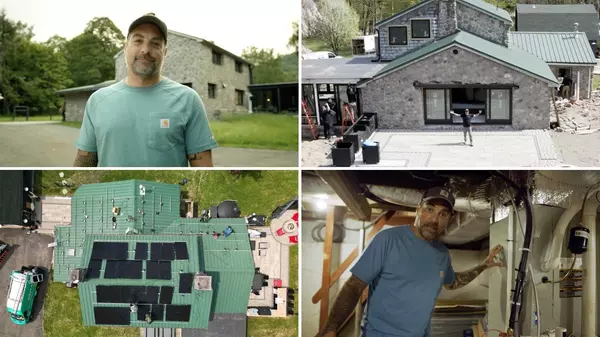Why Factoring In Landscaping Costs Before Buying a Home Can Save You From Buying a Money Pit
Whether you have pets or kids, crave more privacy, or simply want to embrace the growing trend of functional outdoor living spaces, you may be longing for a home with a big yard.
While a bigger yard comes with plenty of perks, it may also come with bigger responsibilities.
Compared with someone who has a smaller outdoor space, you may spend more on lawn care, landscaping, and regular upkeep.
By doing some research and crunching the numbers beforehand, you can ensure your yard brings you joy—rather than drains your wallet.
Landscaping costs for big yards
Maintaining a large backyard almost always involves considerable costs. Let’s say you’re comparing two homes, one with a quarter-acre lot and the other with 2 acres.
“That extra space can easily add $500+ a month in upkeep, depending on where you live, which services you hire out, and how you value your time,” says Skye Durrant, co-founder of LawnGuru in Ann Arbor, MI.
Let’s take lawn mowing as an example. According to Durrant, the average cost to mow a quarter-acre lawn is around $40 to $50 per week, while a 2-acre lot will run you $175 or more per week.
On a monthly basis, that’s roughly $180 for the smaller yard versus about $700 for the larger one—a whopping $520 difference.
If you plan to mow your yard yourself, keep in mind that most push mowers can handle a quarter-acre lawn in under half an hour. However, try tackling 2 acres with a push mower, and you’ll be out there for hours and exhausted by the end.
“In that case, it probably makes more sense to buy a riding mower, which can easily cost several thousand dollars compared to a few hundred for a standard push mower,” explains Durrant.
Bill Hester, a registered landscape architect and owner of Conserva Irrigation in Myrtle Beach, SC, explains that the cost of irrigation is also higher with a larger yard.
“Our normal-sized irrigation system may cost anywhere from $4,500 to $5,500. However, add another 2,000 square feet to your backyard and you’ll see the price soar to more than $8,000," says Hester.
Hester points out that a bigger system comes with higher water bills. “Our systems are super-efficient, but it’s simple math: The more zones, the more heads you have, the more water you will pay for,” he says.
Ways to save money on yard maintenance
If you do want a home with a big yard despite the greater upkeep, there are several ways to reduce maintenance costs. Here are several suggestions from the pros:
Pick the right property
If you decide to go with the larger yard, try to find one that includes some wooded or natural areas. “This can save a lot of time and money on maintenance, and also gives you a convenient spot to dump leaves and debris so nature can take care of it, instead of your wallet,” explains Durrant.
Invest in the right equipment
One of the best ways to save money on property maintenance is by doing it yourself. But if you value your time, it’s worth investing in the right equipment. “Spending a bit more upfront on a capable tractor that can handle mowing, mulching leaves, and hauling materials will pay off in the long run,” says Durrant.
Choose low-maintenance materials
“Natural stone and crushed gravel, for example, last for a long time. They don’t need replacing every few years like mulch does,” says Dawn DeFeo, head of landscaping and gardening at Landscape Barn in Monroe, CT. These low-maintenance alternatives require some minor upkeep a few times a year.
Space out your backyard project
Hester explains that you don’t have to do everything at once and can break up a backyard renovation in phases. Take your time and shop around for the best deals on materials and landscapers. “Just make sure you have a plan. Know what should happen first and what can wait. This will help mitigate redo costs down the road,” explains Hester.
Categories
Recent Posts










GET MORE INFORMATION

